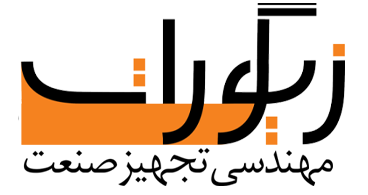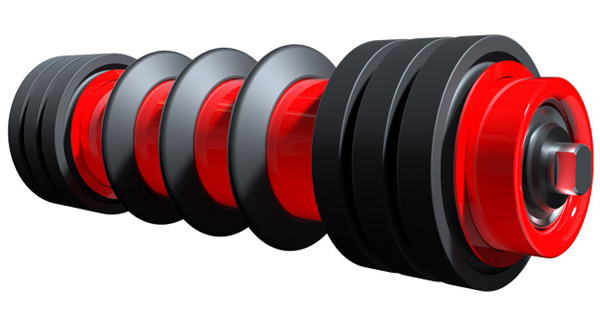Introduction and Application of Return Roller
A roller, also known as a “idler“, is a primary conveyor belt support element that comes in various types. In a conveyor belt, material transfer is carried out by a component called a roller. It is the most wear-prone part of the conveyor belt. It is important to note that the imbalance and improper leveling of the roller have the most significant impact on the performance of other conveyor belt components.
Return Roller
One type of roller is the return roller. Return rollers hold the belt in the return path to the loading area after the load has been discharged. This type of roller consists of a horizontal roller suspended from the conveyor’s traverse. The rollers, which are shaped like a 7, consist of two smaller rollers installed to improve routing.
The return roller is located on the return side of the conveyor belt and is used from the discharge point to the loading point. The main function of return rollers is to hold the return belt, which is implemented in two ways: V-shaped and horizontal. The V-shape is more suitable for carrying heavy belts. This article discusses the application of return rollers.
Application of Return Roller
The return roller is used at the belt discharge to hold the return belt to the loading point. The V-shaped return belt is used for heavy belts, and rubber rings are placed on the rollers to prevent damage to the belts.
Rubber rings are installed at intervals on the roller body and help to move away from the conveyor belt and prevent the spillage of abrasive materials. Return rollers only support the weight of the belt on the underside of the conveyors during belt return and movement and are manufactured in long sizes.
The features of return rollers include two options:
- V-shaped return roller: This type is used for heavy-duty applications and has a higher load capacity.
- Horizontal return roller: This type is used for lighter applications and has a lower load capacity.
Where are Return Rollers Located?
Return rollers are located under the conveyor belt frame.
Features and Specifications of a Roller
When selecting a roller, the following features and specifications should be considered:
- Expected surface wear and abrasion level
- Exposure to technical base fluids, ozone, natural oils, and water
- Ambient operating temperature
- Desired speed for feeding material onto the rollers, transportation, and loading
- Equipment dimensions and maximum load capacity
- Weight and physical shape of the load
Structure of Return Roller and Sealing Arrangement
The roller sealing parts are made of Nylon6, and the bearing and roller housings are made of ST-37 steel and are available in different thicknesses. The shaft is made of CK-45, and the shaft analysis is provided upon request.
NACHI Japan is used to manufacture the bearings, and the authenticity documents of the bearings are provided. The rubber rings are made of NR/SBR, and it is possible to test and analyze the relevant parameters. The other standards and materials of the parts are specified in the above exploded diagram.
The dimensional table of the rollers is specified according to DIN 15207 and ISO 1537 standards. The structure of the return rollers and the type of sealing arrangement are in accordance with the Rulmeca standard.
Components and Applications of Return Rollers
The components of a return roller include:
- End cap
- Bearing
- Tube with different materials
- Movable tube
- Bearing
- Center shaft
- Sealing and waterproofing parts
- Spigot and other parts
Application of Rollers in Various Industries
The applications of rollers in various industries include:
- Wood industry
- Paper industry
- Packaging industry
- Printing and pressing
- Mining
- Logistics or transportation
- Labeling
- Pharmaceuticals
- Medical equipment industry
- Food industry
- Electronics
- Agricultural equipment
- Aerospace assembly parts
Advantages and Disadvantages of Return Roller
Here are the advantages and disadvantages of return rollers:
Advantages of Return Roller
- Prevents conveyor belt wear: It protects the conveyor belt from sticky materials and prevents abrasion and tearing, maintaining order.
- Corrects the path of movement: It prevents the conveyor belt from deviating from its path and corrects any possible deviations.
- Resistant to temperature fluctuations: It can operate in a temperature range of -10 to 80 degrees Celsius and withstand severe temperature fluctuations.
Disadvantages of Return Roller
Return rollers hold the belt on the empty side and support the weight of the belt.
Function of Return Roller
In direct material handling, some sticky materials may adhere to the conveyor belt and not be easily separated from the belt surface, which can damage the conveyor belt. To avoid such problems, return rollers are added to other rollers to prevent belt damage caused by sticky materials.

